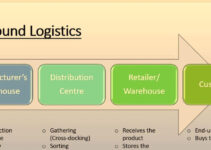Amazon is a cloud computing, video streaming, e-commerce, and online advertising American multinational conglomerate. Jeff Bezos started the tech company in 1994. Today, we’ll discuss the value chain analysis of Amazon; primary and supporting activities in the process of value chain analysis Example Company. They are inbound and outbound logistics, operations, marketing, and customer service; infrastructure, HRM, technology, and procurement as an application of the value chain analysis process.
Substitutes of Amazon
- Costco
- Google Play Store
- eBay
- Tesco
- JD
- Alibaba
- Flipkart
- Otto
- Apple iTunes
The Value chain analysis of Amazon would analyze the primary and supporting activities in the process of value chain analysis. They’re inbound and outbound logistics, operations, marketing, and services; infrastructure, HRM, technology, and procurement. Here’s Amazon value chain analysis company example as follows;
Value Chain Analysis of Amazon
Let’s discuss the primary and supporting activities involved in the process of value chain analysis of Amazon. It is an application of value chain analysis based on Porter’s model; some of the key elements and components of value chain analysis are as follows;
Primary Activities of Amazon
Some of the five main primary activities in the value chain analysis of Amazon are as follows;
Inbound Logistics of Amazon
I-Supplier Relationship
Amazon has established very good and effective relationships with its suppliers. The tech company has partnered up with suppliers and vendors across the world to ensure the smooth flow of products and goods to the fulfillment centers. The worldwide network of suppliers would help the company to increase its product offering, and avoid potential disruptions and issues.
II-Inventory Management System
Amazon has invested a significant amount of capital resources in the development of an advanced inventory management system. It employs machine learning and artificial intelligence techniques and strategies. As a result, it helps the company to decrease the storage cost and maximize the inventory level; it makes highly demanded and popular products and goods available for shipment.
III-Drop Shipping
Amazon also employs the drop shipping strategic approach for some particular products and services. Here, the e-commerce platform directly ships the products and goods from suppliers to the end consumers. However, the company doesn’t need to store the products and goods in the warehouse, and it decreases the delivery time and the storage cost.
IV-Robust System
Amazon makes its system and platform robust during particular seasons like Cyber Monday and Black Friday. It helps the company to keep up with the product demand while compromising the high volume without impacting efficiency.
Outbound Logistics of Amazon
I-Global Distribution Network
Amazon has established a worldwide distribution network comprising more than 185 fulfillment centers in various regions globally. They ensure the speedy fulfillment of orders and shipments. Along with the physical network, Amazon also employs advanced logistical tools and applications to deal with the flow of goods from the warehouses to the end consumers.
II-Multiple Distribution Shipment
In order to meet the demands of customers, Amazon provides multiple shipment options to the customers. It ranges from Amazon Prime to same-day delivery, two days or takes a few days to complete the delivery. However, Amazon Prime Air is the latest and most advanced delivery system that makes sure the delivery and transport of the package within 30 minutes.
III-Last Mile Delivery
Amazon has established its own shipment and delivery logistical network, instead of relying on the 3rd party channels and service providers. The last-mile delivery system helps the company to achieve significant control over the delivery and distribution system.
Operations of Amazon
I-WMS
Warehousing is the key element of Amazon’s operational processes and network. The e-commerce platform has established a network of over 185 fulfillment centers and they have roundabout 150 million square feet of space. The company employs more than 200,000 robots at its fulfillment centers, artificial intelligence tools, and machine learning; help the company to decrease processing time and achieve efficiency.
II-JIT
Amazon implements the JIT (just-in-time) inventory management system as a part of its operational strategic approach. It helps the company to maintain the in-demand inventory during a particular time; makes sure of quick turnaround, and decreases the overall storage cost. However, if you integrate demand forecasting algorithms and forecasting analytical tools. It helps the company to increase the inventory turnover rate by streamlining inventory and customer demand patterns.
Marketing & Sales of Amazon
I-Recommendations
The recommendation engine of Amazon employs AI and ML algorithms and tools to determine the buying behavior and search patterns of customers. It helps the company to know the personalized product suggestions to adjust the marketing and promotional message and amplify the conversion rate. According to an estimate by McKinsey Report, approximately 35% of Amazon’s sales come from the recommendation engine.
II-Convenient
Amazon has developed a simple and user-friendly platform; the company earned the patent for a one-click purchasing system and platform in 1999. It helps the company to increase the conversion and transaction speed.
III-Amazon Prime
Amazon Prime is a subscription-based sales and promotional strategic approach and it has established a network of over 200 subscribers across the world. It offers various benefits and they’re as follows;
- Hosting digital services
- Exclusive deals
- Speedy shipping
Services of Amazon
I-AWS
AWS (Amazon Web Services) is a cloud-based platform and it provides multiple services; content delivery, database storage, and computing power. As of 2022, the AWS platform has established a platform of over 1.45 million business users. Amazon has established various networks of various platforms and stores to offer a unique experience to customers.
- 4-Star Amazon Store
- Books Amazon
- Amazon Go
Supporting Activities of Amazon
Some of the five main supporting activities in the value chain analysis of Amazon are as follows;
Infrastructure of Amazon
Amazon has established a strong online and tech infrastructure to ensure the smooth functioning of its operations. It plays a key role in the effectiveness and efficiency of its operations. However, some of the key elements of Amazon’s infrastructure are as follows;
- Management control
- Corporate policies and procedures
- Administrative systems
- Software development centers
- State-of-the-art data centers
HRM of Amazon
Human resource management plays a key role in the operations of Amazon. It focuses on developing a performance-based culture that rewards the innovation of customers. However, the tech company invests a significant amount of capital resources in the training, recruiting, and retaining of its employees and customers.
Technological Development of Amazon
Tech growth and development is the center of Amazon’s platform. In fact, the tech brand is the pioneer in the e-commerce industry, fulfillment centers, robotics, Alexa voice services, AWS, and others. The company allocates approximately 47 billion USD annually on research and development to achieve technological innovation and growth.
Procurement of Amazon
Amazon deals with a wide range of products and services in various categories; that’s why its procurement strategic approach is highly significant. The tech brand partnered with hundreds of thousands of suppliers across the world to ensure the smooth supply of products and goods.
Conclusion: Amazon Value Chain Analysis Example Company |Application of Value Chain Analysis Process
After an in-depth study of the value chain analysis of Amazon; we have realized that Amazon is the world’s leading tech giant multinational corporation. If you are learning about the Amazon value chain analysis Example Company; then you should keep in mind the abovementioned primary and supporting activities involved in the process. They’re inbound and outbound logistics; operations, marketing and sales, and services; infrastructure, procurement, HRM, and technological development as an application of the value chain analysis process.
Ahsan is an accomplished researcher and has a deep insight in worldly life affairs. He goes Live 3 days a week on various social media platforms. Other than research writing, he’s a very interesting person.


